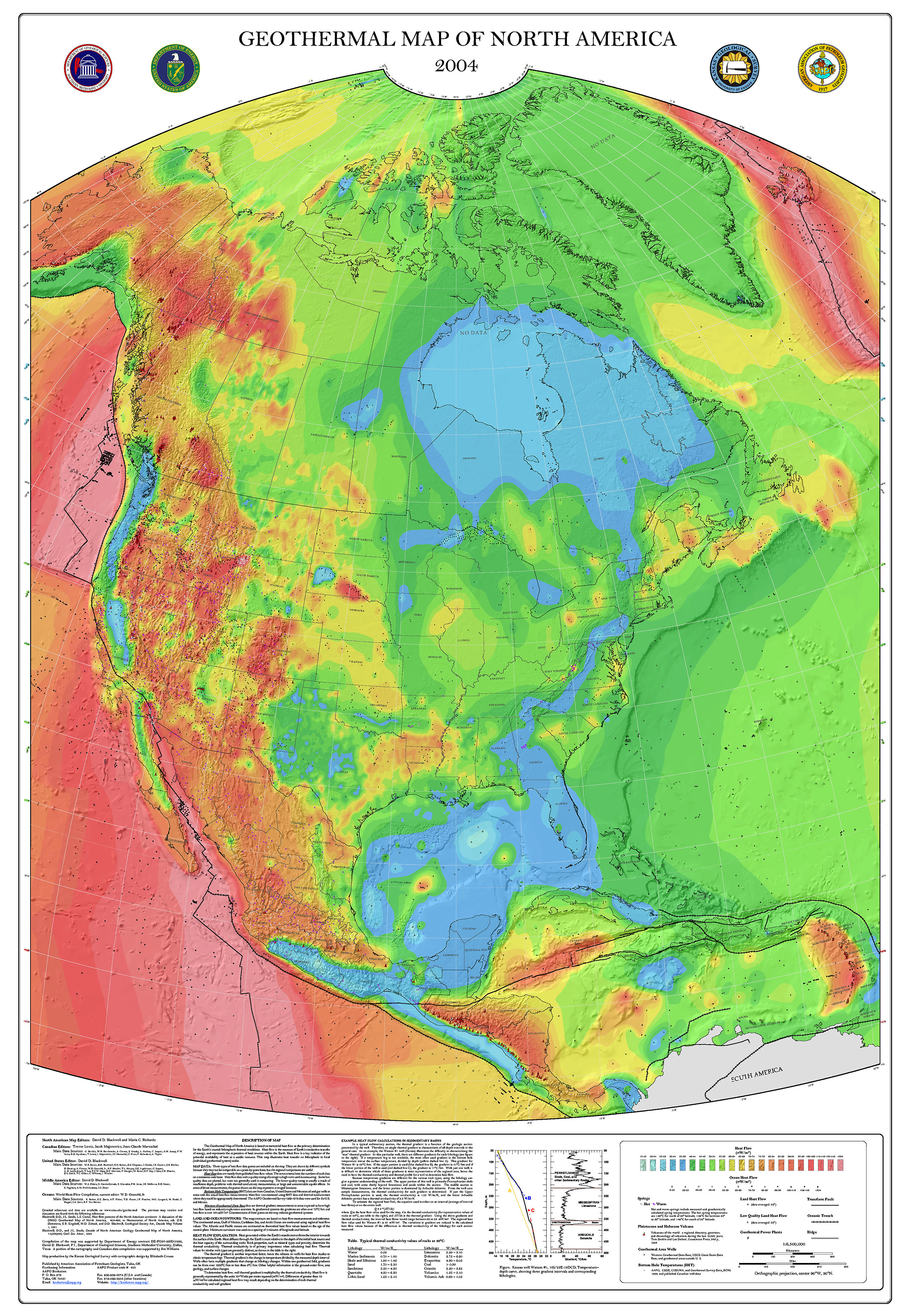GOOGLE.ORG invests in SMU geothermal research
Search engine giant Google's decision to help fund Southern Methodist University's geothermal resource mapping underscores the importance of SMU's research toward this under-the-radar alternate energy technology.
Search engine giant Google's decision to help fund Southern Methodist University's geothermal resource mapping underscores the importance of SMU's research toward this under-the-radar alternate energy technology.
 Geothermal Map of North America (Click image for larger version. 3 mg.) |
Google.org, the philanthropic arm of the Silicon Valley web company, announced this week it will grant $489,521 to the Geothermal Lab in SMU's Dedman College of Humanities and Sciences to update mapping of geothermal resources. The Google grant will allow SMU to provide information on the potential for geothermal energy production in regions where geothermal data has previously been spotty or unavailable.
Google's investment in enhanced geothermal systems research is part of the company's commitment to develop a renewable energy source that is cheaper than coal. Traditional geothermal plants, like those located on The Geysers geothermal field on the northern coast of California, rely on tapping naturally occurring steam and hot-water vents. But enhanced geothermal systems work to give Mother Nature a boost by drilling into hot rock, circulating water through the fractured layers, and pumping the resulting hot water and steam back to the surface to drive a conventional turbine and produce electricity.
The SMU map also underscores the potential for tapping geothermal energy from existing oil and gas wells — a counter-intuitive green initiative. The process of pumping oil and gas frequently brings with it waste fluids that carry substantial heat to the surface. The installation of a binary pump at the wellhead can use this hot, waste fluid to produce enough energy to run the well (mitigating production costs for low-volume wells). Taking this a step further, an oil field full of geothermal pumps could be linked to distribute (at a profit) surplus electricity to outside users.
David Blackwell, Hamilton Professor of Geothermal Studies in SMU's Roy M. Huffington Department of Earth Sciences, and Maria Richards, Geothermal Lab coordinator, previously collaborated on the Geothermal Map of North America for the American Association of Petroleum Geologists in 2004. The 2004 map expanded the 1992 version by adding the oil and gas industry thermal data to the research quality heat flow data. The SMU map shows the potential for enhanced geothermal systems development nationwide.
Google.org announces investments in Enhanced Geothermal Systems |
"Dave Blackwell's career has been based on collecting heat flow data — he's done this for 40 years," Richards explained. "But there are parts of the country that have never been researched in detail — whether by Dave or other researchers in the geothermal community. This is an opportunity for the geothermal industry, via SMU, to collect data in places where there is virtually no data."
In places where oil and gas drilling data are not available, SMU research will focus on thermal conductivity models based on geological formation as well as data from existing deep water wells. Many municipal water wells are drilled to a depth sufficient to measure the heat content in the Earth.
"Enhanced geothermal systems could be the 'killer app' of the energy world," said Dan Reicher, director of climate and energy initiatives for Google.org. "It has the potential to deliver vast quantities of power 24/7 and be captured nearly anywhere on the planet. And it would be a perfect complement to intermittent sources like solar and wind."
Google.org has also announced funding of more than $10 million for two private companies to research cost reductions and improved performance in EGS technology and to expand the range of deep, hard rock drilling.
A private university located in the heart of Dallas, SMU is building on the vision of its founders, who imagined a distinguished center for learning emerging from the spirit of the city. Today, nearly 11,000 students benefit from the national opportunities and international reach afforded by the quality of SMU's seven degree-granting schools.
Media Contact:
Kim Cobb
214-768-7654
cobbk@smu.edu
# # #
07240-nr-08/20/08-kc